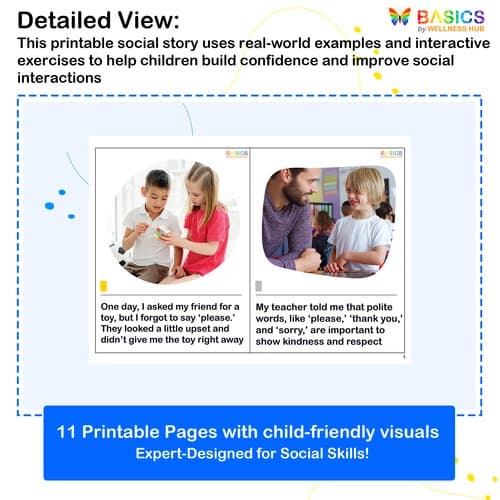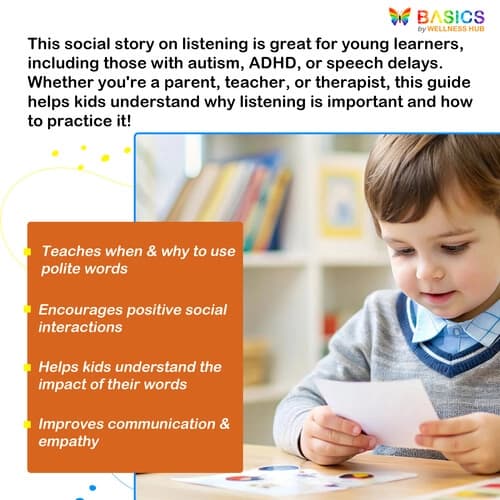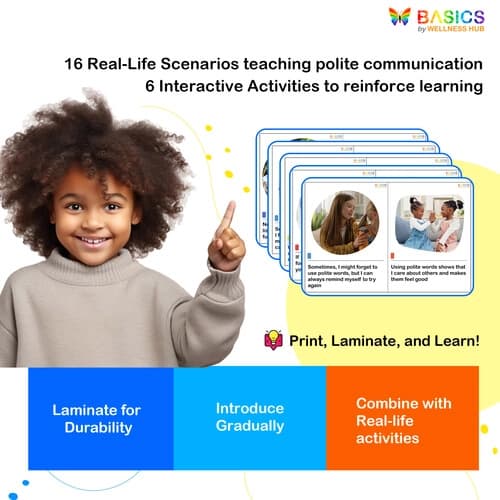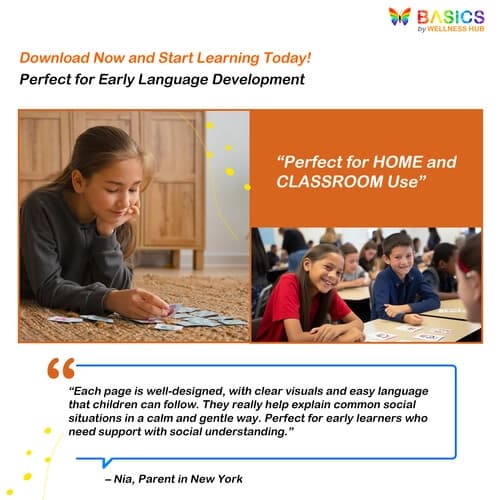

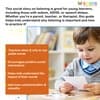
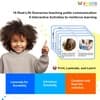
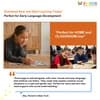
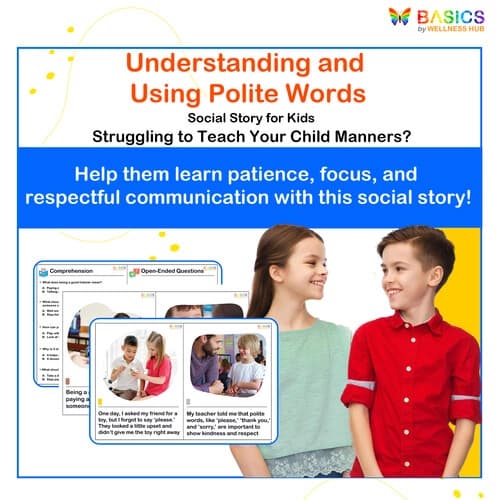
Understanding and Using Polite Words – Social Story for Kids
₹80
₹160
50% off
0 (0 ratings)
Grade Levels
Pre-K - Grade 3 (Ages 4-9)
Content Overview
Format: Printable PDF, Total Pages: 11, Features (≤15 words): 16 real-life scenarios, engaging illustrations, interactive activities, kid-friendly language
Categories
Pages from the Resource
Help kids understand and use polite words like please, thank you, and sorry with this engaging social story. Using real-life scenarios, child-friendly illustrations, and interactive activities, this resource teaches manners, respect, and kind communication. Ideal for home, classroom, and therapy use, especially for children with autism, ADHD, or social skill delays.
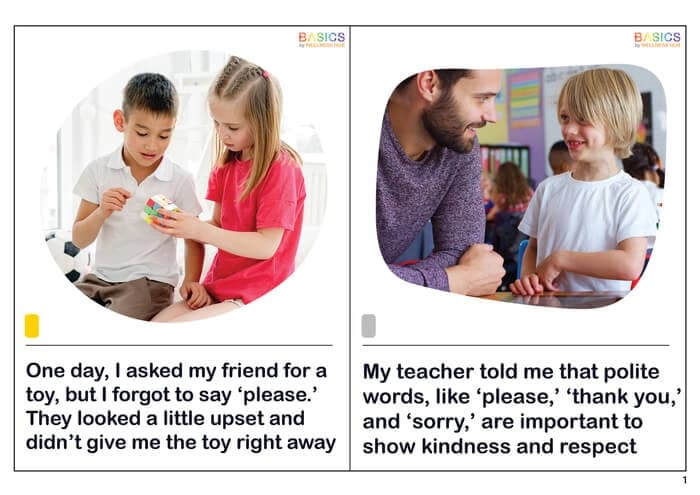
Page 1
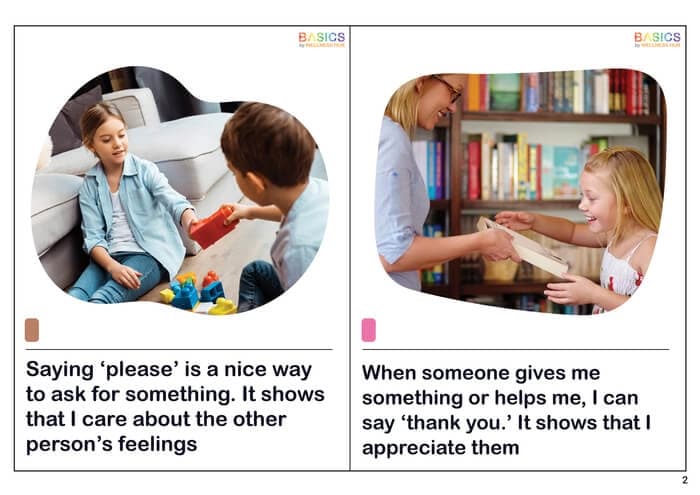
Page 2
What Users Say
0
0 ratings
5
0+
4
0+
3
0+
2
0+
1
0+
5 Stars
Product is Good to use.
1 year ago
Varsha Parent
Similar Products
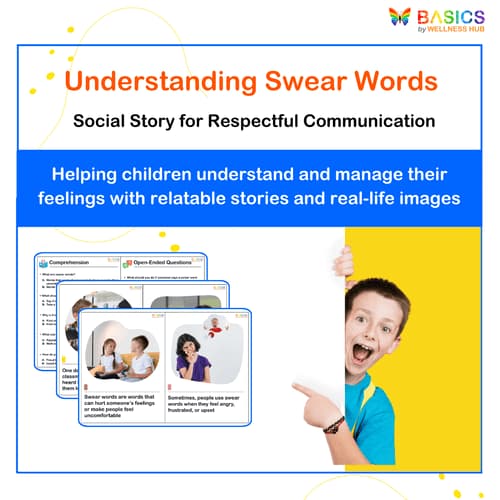
Understanding Swear Words – Social Story for Respectful Communication
₹ 80.00
₹ 160.00
50% off
4.9 (48 ratings)
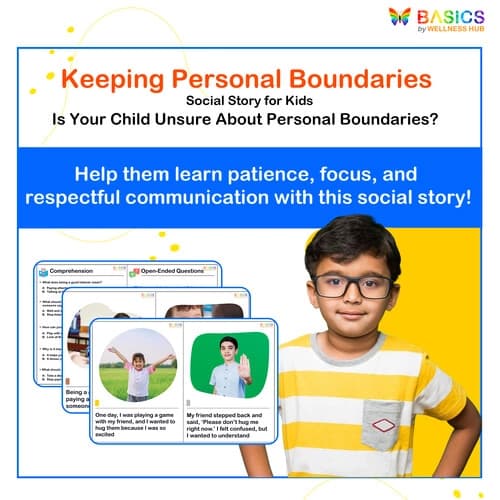
Keeping Personal Boundaries – Free Social Story for Kids’ Personal Space
FREE
₹160
50% off
5.0 (58 ratings)
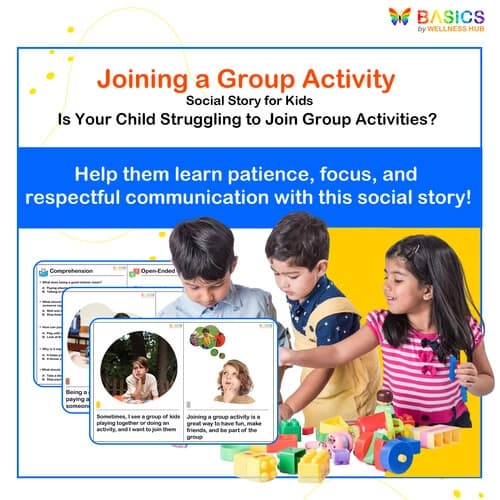
Joining a Group Activity – Social Story for Kids’ Social Confidence
₹ 80.00
₹ 160.00
50% off
5.0 (46 ratings)

Using Kind Hands – Social Story for Gentle Behavior & Self-Control
₹ 80.00
₹ 160.00
50% off
4.6 (54 ratings)
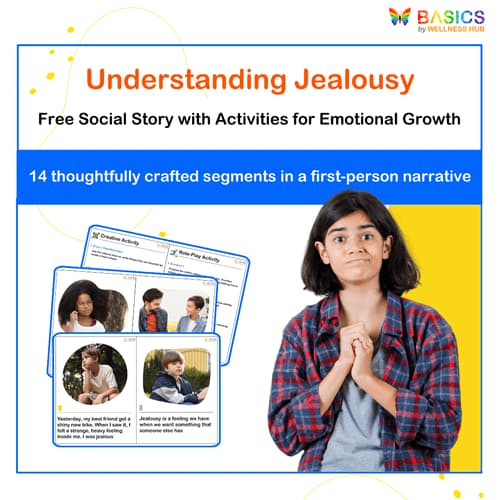
Understanding Jealousy: Free Social Story with Activities for Emotional Growth
FREE
₹160
50% off
4.6 (56 ratings)
About the Product
Introduction
Politeness and respectful communication are essential life skills that help children develop strong relationships, positive interactions, and social confidence. Learning to say “please,” “thank you,” and “sorry” is one of the first steps in teaching children about kindness, respect, and empathy.
Many children, especially those with autism, ADHD, speech delays, or social difficulties, may struggle with understanding why polite words matter or when to use them. Without direct teaching, they might not recognize how words impact others’ feelings and the importance of social etiquette.
This social story helps children develop a natural habit of using polite words by providing:
✔ 16 real-life scenarios demonstrating the importance of using polite words in different situations.
✔ Engaging illustrations to visually reinforce when and how to use words like “please,” “thank you,” and “sorry.”
✔ Simple, clear language to ensure kids easily grasp the concepts.
✔ Interactive activities to practice polite communication in a fun, structured way.
By consistently using this resource, children will become more aware of their language choices, develop stronger social skills, and build meaningful relationships based on kindness and mutual respect.
Product Details
- Format: Printable PDF
- Total Pages: 11
- Number of Segments: 16 real-life scenarios
- Features:
✔ Child-friendly illustrations to visually reinforce polite words
✔ Simple language making it easy for kids to understand
✔ Interactive activities to practice polite communication
✔ Applicable for home, school, and therapy settings
This easy-to-use social story can be printed or used digitally on tablets and computers.
Educational Benefits
- Teaches Essential Polite Words & Social Norms
- Helps children understand the importance of “please,” “thank you,” and “sorry” in daily life.
- Reinforces that using polite words builds positive relationships and shows kindness and respect.
- Builds Social-Emotional Learning (SEL) Skills
- Encourages self-awareness by helping children recognize when to use polite words.
- Develops empathy as kids see how words impact others’ feelings.
- Supports Children with Special Needs
- Structured storytelling helps kids with autism, ADHD, and social challenges understand the context of polite communication.
- Step-by-step guidance helps them process and recall polite words in different situations.
- Encourages Positive Behavior & Communication
- Guides children to respond appropriately in conversations.
- Helps reduce interruptions, frustration, and misunderstandings in social interactions.
- Practical, Real-Life Application
- Provides everyday scenarios like asking for help, apologizing for mistakes, and expressing gratitude.
- Promotes independence and confidence in social interactions at home, school, and public places.
Instructions for Use
Step 1: Read the Social Story Together
- Sit with the child and read the story aloud, emphasizing key polite words.
- Discuss each scenario and illustration, ensuring the child understands why politeness matters.
- Encourage the child to repeat polite words aloud (e.g., “Can I have that, please?”).
Step 2: Engage in Interactive Learning
- After reading, ask the child follow-up questions to encourage critical thinking.
Example Questions:- “Why is it important to say ‘thank you’ when someone helps us?”
- “How do you feel when someone forgets to say ‘please’?”
- Use the interactive activities included in the resource, like role-playing polite conversations or sorting polite vs. impolite responses.
Step 3: Encourage Real-Life Application
- Practice using polite words during daily routines at home and school.
- Gently remind the child when they forget to use polite words in social settings.
- Use praise and positive reinforcement (“That was great! You remembered to say ‘thank you’ when you got your snack!”).
Step 4: Revisit & Reinforce
- Read the social story regularly (weekly or monthly) to reinforce lessons.
- Use visual reminders like posters, charts, or simple flashcards.
- Make politeness a family or classroom rule by modeling good behavior.
Activities Using the Resource
These interactive activities help reinforce polite communication and ensure that children understand when and how to use polite words in real-life situations.
1. Role-Playing Polite Conversations
Objective: Teach children how to naturally incorporate polite words into their daily interactions.
Materials: None (or small props like toys for pretend play).
How to Play:
- Pick a scenario from the social story (e.g., “Asking for help” or “Apologizing when making a mistake”).
- Role-play with the child, acting out the wrong way (without polite words) and then the right way (with polite words).
- Ask the child to explain why the polite version is better.
- Repeat with different situations until the child gets comfortable using polite words naturally.
2. “Polite vs. Impolite” Sorting Game
Objective: Help kids identify polite vs. impolite ways of speaking.
Materials: Printable sentence cards (or written on index cards).
How to Play:
- Write or print various phrases (some polite, some not) on cards.
- Have the child sort them into two piles: Polite Words and Not Polite Words.
- Discuss why some phrases are polite and how to improve impolite ones.
Examples:
- Polite: "Can I have a turn, please?"
- Not Polite: "Give me that!"
- Polite: "Thank you for helping me!"
- Not Polite: "I don’t care."
3. Thank You Card or Apology Letter Writing
Objective: Encourage practicing gratitude and apologies in a meaningful way.
Materials: Paper, markers, stickers for decorating.
How to Play:
- Have the child think of someone they appreciate or need to apologize to.
- Help them write a short thank-you card or apology letter.
- Read it together and discuss how it might make the recipient feel.
4. “Politeness Challenge” – Tracking Polite Words in Real Life
Objective: Encourage children to apply polite words in everyday situations.
Materials: Simple checklist or sticker chart.
How to Play:
- Create a weekly challenge where the child earns a sticker or point each time they use polite words naturally.
- Track words like:
- Saying “please” when making a request.
- Saying “thank you” when receiving something.
- Saying “sorry” when making a mistake.
- At the end of the week, celebrate progress and encourage continued use of polite language!
FAQs
Q1: Who is this social story designed for?
A1: This resource is for children aged 4–9 who are learning basic social skills and manners. It’s especially helpful for children with autism, ADHD, or social communication challenges who need explicit instruction on using polite words.
Q2: How often should I use this social story?
A2: For best results, read the social story multiple times and incorporate role-playing activities daily or weekly. Encourage real-life application by gently reminding children to use polite words.
Q3: Is this social story helpful for nonverbal children?
A3: Yes! For nonverbal or minimally verbal children:
✔ Use visuals and gestures to reinforce polite communication.
✔ Model polite words while using AAC devices or picture communication.
✔ Encourage pointing or signing to express politeness.
Q4: Can older or younger children benefit from this?
A4: Yes! The simple storytelling is designed for younger children, but older kids who struggle with social skills or understanding politeness can also benefit. Adjust the depth of conversation to suit their level.
Q5: What if my child refuses to use polite words?
A5: ✔ Be patient – children take time to develop new habits.
✔ Praise efforts – even small progress should be acknowledged.
✔ Model polite language – children learn best from adults around them.
✔ Make it fun – use games and interactive activities to reinforce politeness.
Usage Rights and Restrictions
Allowed Usage:
- Personal use for parents, teachers, and therapists.
- Printable for classroom, home, or therapy sessions.
- Can be used in group or one-on-one settings.
Not Allowed:
- Reselling, redistributing, or modifying the resource for commercial use.
- Sharing publicly (e.g., on blogs or social media) without permission.
- Uploading to websites for free distribution.
If you need a bulk license for schools or therapy centers, please contact us!
Conclusion
Conclusion
Teaching children to use polite words like please, thank you, and sorry is an important step in their social-emotional learning. The “Understanding and Using Polite Words” social story provides a fun, structured way to introduce good manners, respect, and empathy through real-life examples, engaging illustrations, and interactive activities.
By reading, practicing, and reinforcing polite communication, children will build stronger relationships and develop a lifelong habit of using kind words in conversations.
With patience and practice, polite words will become second nature for kids!
